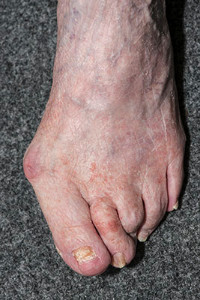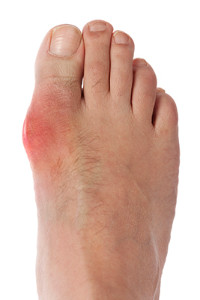
Lansdowne, PA
(610) 626-3338

Lansdowne, PA
(610) 626-3338
 Plantar fasciitis is a common foot condition that may cause a stabbing pain in the heel. As a result, someone who has the condition may find common activities such as running and walking to be extremely painful. Plantar fasciitis occurs when there is an injury of the plantar fascia--the long structure at the base of the foot that connects the heel to the toes. Stretching has been proven to be effective in alleviating pain related to plantar fasciitis, so it is important that those with the condition incorporate stretching into their daily routines.
Plantar fasciitis is a common foot condition that may cause a stabbing pain in the heel. As a result, someone who has the condition may find common activities such as running and walking to be extremely painful. Plantar fasciitis occurs when there is an injury of the plantar fascia--the long structure at the base of the foot that connects the heel to the toes. Stretching has been proven to be effective in alleviating pain related to plantar fasciitis, so it is important that those with the condition incorporate stretching into their daily routines.
Plantar fasciitis can be very painful and inconvenient. If you are experiencing heel pain or symptoms of plantar fasciitis, contact Dr. George Yarnell from Pennsylvania. Our doctor can provide the care you need to keep you pain-free and on your feet.
What Is Plantar Fasciitis?
Plantar fasciitis is the inflammation of the thick band of tissue that runs along the bottom of your foot, known as the plantar fascia, and causes mild to severe heel pain.
What Causes Plantar Fasciitis?
How Can It Be Treated?
While very treatable, plantar fasciitis is definitely not something that should be ignored. Especially in severe cases, speaking to your doctor right away is highly recommended to avoid complications and severe heel pain. Your podiatrist can work with you to provide the appropriate treatment options tailored to your condition.
If you have any questions please feel free to contact our office located in Lansdowne, PA . We offer the newest diagnostic and treatment technologies for all your foot and ankle needs.
 Now that the warm weather is starting to approach us, you may be tempted to start wearing open toed shoes. However, it is important that you take good care of your feet so that you can be confident while wearing your favorite sandals this summer. Getting rid of the dead skin that may have built up during the winter months should be one of the first steps you take toward improving your foot health. This can be done via the natural route by using sea salt or grape seeds as exfoliants. If you still have dead skin on your feet after exfoliating, you may want to seek the assistance of a podiatrist for treatment. Another tip to have healthy feet is to make sure your toenails are cut straight across, instead of in a rounded shape. You should try to make an effort to trim your toenails every two to three weeks.
Now that the warm weather is starting to approach us, you may be tempted to start wearing open toed shoes. However, it is important that you take good care of your feet so that you can be confident while wearing your favorite sandals this summer. Getting rid of the dead skin that may have built up during the winter months should be one of the first steps you take toward improving your foot health. This can be done via the natural route by using sea salt or grape seeds as exfoliants. If you still have dead skin on your feet after exfoliating, you may want to seek the assistance of a podiatrist for treatment. Another tip to have healthy feet is to make sure your toenails are cut straight across, instead of in a rounded shape. You should try to make an effort to trim your toenails every two to three weeks.
Everyday foot care is very important to prevent infection and other foot ailments. If you need your feet checked, contact Dr. George Yarnell from Pennsylvania. Our doctor can provide the care you need to keep you pain-free and on your feet.
Everyday Foot Care
Often, people take care of their bodies, face and hair more so than they do for their feet. But the feet are a very important aspect of our bodies, and one that we should pay more attention to. Without our feet, we would not be able to perform most daily tasks.
It is best to check your feet regularly to make sure there are no new bruises or cuts that you may not have noticed before. For dry feet, moisturizer can easily be a remedy and can be applied as often as necessary to the affected areas. Wearing shoes that fit well can also help you maintain good foot health, as well as making it easier to walk and do daily activities without the stress or pain of ill-fitting shoes, high heels, or even flip flops. Wearing clean socks with closed shoes is important to ensure that sweat and bacteria do not accumulate within the shoe. Clean socks help to prevent Athlete’s foot, fungi problems, bad odors, and can absorb sweat.
If you have any questions please feel free to contact our office located in Lansdowne, PA . We offer the newest diagnostic and treatment technologies for all your foot and ankle needs.
 Improper footwear is one of the leading causes of bunion development. Women are ten times more likely to have bunions compared to men, and the fact that they tend to wear high heels and narrow shoes only makes their bunion problems worse. Another cause of bunions can be genetics. Foot shape and structure are hereditary traits, and some foot shapes are more prone to bunion development than others. Some risk factors include having flat feet, low arches, and loose joints.
Improper footwear is one of the leading causes of bunion development. Women are ten times more likely to have bunions compared to men, and the fact that they tend to wear high heels and narrow shoes only makes their bunion problems worse. Another cause of bunions can be genetics. Foot shape and structure are hereditary traits, and some foot shapes are more prone to bunion development than others. Some risk factors include having flat feet, low arches, and loose joints.
If you are suffering from bunions, contact Dr. George Yarnell of Pennsylvania. Our doctor can provide the care you need to keep you pain-free and on your feet.
What Is a Bunion?
A bunion is formed of swollen tissue or an enlargement of boney growth, usually located at the base joint of the toe that connects to the foot. The swelling occurs due to the bones in the big toe shifting inward, which impacts the other toes of the foot. This causes the area around the base of the big toe to become inflamed and painful.
Why Do Bunions Form?
Genetics – Susceptibility to bunions are often hereditary
Stress on the feet – Poorly fitted and uncomfortable footwear that places stress on feet, such as heels, can worsen existing bunions
How Are Bunions Diagnosed?
Doctors often perform two tests – blood tests and x-rays – when trying to diagnose bunions, especially in the early stages of development. Blood tests help determine if the foot pain is being caused by something else, such as arthritis, while x-rays provide a clear picture of your bone structure to your doctor.
How Are Bunions Treated?
If you have any questions, please feel free to contact our office located in Lansdowne, PA . We offer the newest diagnostic and treatment technologies for all your foot care needs.
Read more about Bunions Gout is a condition that results from an excess of uric acid in the body. If the uric acid is present for enough time, it can turn into needle-like crystals that can cause pain and swelling in the joints. Although the attacks due to gout can be severe, the inflammation tends to go down quickly. Gout attacks usually don’t cause long-term damage, but a buildup of crystals can lead to cartilage and bone damage, which may in turn lead to arthritis. The condition itself can be treated with anti-inflammatory drugs (NSAIDs) as well as lifestyle modifications. People who have gout should avoid eating foods high in uric acid such as shellfish, red meat, oily meat, and sugary drinks.
Gout is a condition that results from an excess of uric acid in the body. If the uric acid is present for enough time, it can turn into needle-like crystals that can cause pain and swelling in the joints. Although the attacks due to gout can be severe, the inflammation tends to go down quickly. Gout attacks usually don’t cause long-term damage, but a buildup of crystals can lead to cartilage and bone damage, which may in turn lead to arthritis. The condition itself can be treated with anti-inflammatory drugs (NSAIDs) as well as lifestyle modifications. People who have gout should avoid eating foods high in uric acid such as shellfish, red meat, oily meat, and sugary drinks.
Gout is a foot condition that requires certain treatment and care. If you are seeking treatment, contact Dr. George Yarnell from Pennsylvania. Our doctor will treat your foot and ankle needs.
What Is Gout?
Gout is a type of arthritis caused by a buildup of uric acid in the bloodstream. It often develops in the foot, especially the big toe area, although it can manifest in other parts of the body as well. Gout can make walking and standing very painful and is especially common in diabetics and the obese.
People typically get gout because of a poor diet. Genetic predisposition is also a factor. The children of parents who have had gout frequently have a chance of developing it themselves.
Gout can easily be identified by redness and inflammation of the big toe and the surrounding areas of the foot. Other symptoms include extreme fatigue, joint pain, and running high fevers. Sometimes corticosteroid drugs can be prescribed to treat gout, but the best way to combat this disease is to get more exercise and eat a better diet.
If you have any questions please feel free to contact our office located in Lansdowne, PA . We offer the newest diagnostic and treatment technologies for all your foot and ankle needs.